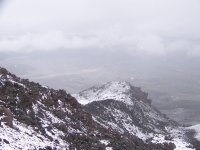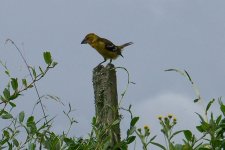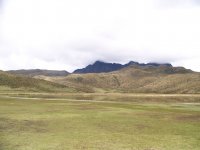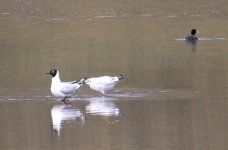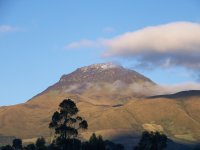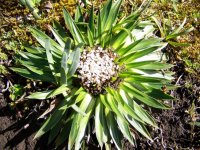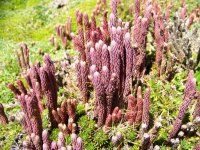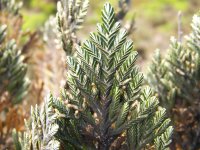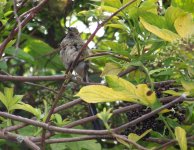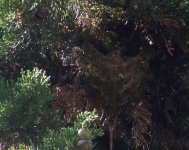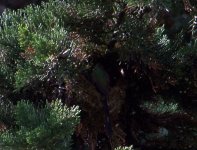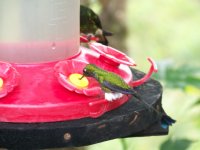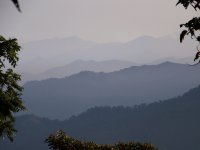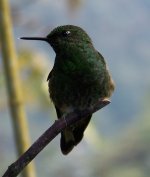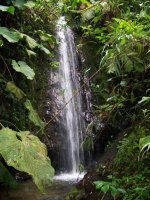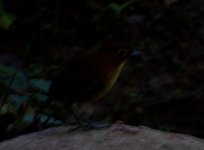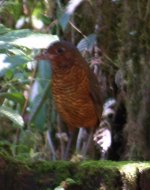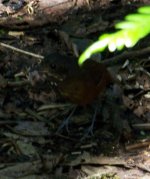I'm so bad about finishing these reports... I leave for Ecuador again in 2 weeks, so I'd kind of like to revive my thread and finish it before starting the next one. Not to mention it will help me review the birds that I will be seeing again!
Dec 28 - Cotopaxi
While at Hosteria Papagayo, we arranged a series of day trips within the area. This day we were taken to Cotopaxi National Park, for a little bit of hiking and downhill mountain biking. Before leaving, I wandered around the hosteria grounds, picking up Hooded Siskin, Southern Yellow-Grosbeak (now called Golden-bellied Grosbeak??), Tyrian Metaltail, and Green-tailed Trainbearer.
We joined 2 others (in addition to the driver) for the trip to Cotopaxi, 2 women from a European country whose identity escapes me almost a year later... our first stop was at the park's visitor center, well above treeline and my first experience in the paramo. While my husband and the others perused the museum and partook of some coca tea, I of course wandered the grounds in search of birds. It was fairly quiet, although I did score a dark morph Variable Hawk, a female Ecuadorian Hillstar, and 2 White-throated Tyrannulets. Soon we were back in the truck and continuing to climb, our next stop being at Laguna Limpiopungo. The lake was teeming with waterbirds, all bearing the adjective "Andean": Andean Gull, Andean Ruddy Duck, Andean Teal, Andean Lapwing (not on the lake itself), and Andean Coot. Too soon we were back in the car, although during our slow climb I managed to pick out both Stout-billed and Bar-winged Cinclodes and Torrent Tyrannulet.
We drove up to a parking area, basically the end of the road, and now at a height just above the paramo vegetation. I can't remember the actual altitude, something like 15,000 ft. Here, we hiked up to the "refuge", a little hut that is just below the glacier and used as the starting point for climbers attempting to summit Cotopaxi. The hike to the refuge was only about a mile, but it was steep, often in loose sandy ash, and of course in very thin air, so it took about an hour. The views were spectacular. Birdlife was a scarce as the oxygen, I kept looking out hoping for condors, though I did see a few Plumbeous Sierra-Finches. My husband suffers in high altitude much more than me, so I arrived at the refuge well ahead of him, and not long after it had begun snowing. The snow turned to hail (small, but still stinging), and I turned back to accompany Tom- luckily he wasn't far away at this point. Soon we were all sitting at a wooden table inside the refuge, enjoying some hot chocolate followed by a delicious lunch of soup (and other stuff that I've forgotten). We hiked back down in a transformed landscape, fat snowflakes continuing to fall gently down. Back down at the cars, though, there was no sign of the storm just above.
Next on the agenda was a bike ride back down to the lake. The bikes were a little sketchy, I ended up with one with very poor brakes, and Tom traded me his bike- he was planning on flying down anyway. So off we went, this time Tom well in the lead, me gripping the brakes the whole way down, only partly because I wanted to search for birds. I was last in line, and with our vehicle following close behind I didn't feel right about stopping too long at any one spot to check things out. My hands began to ache from gripping the brakes so hard, but I just didn't have the guts to let go and fly. I was grateful to reach level ground, where Tom had to stopped to wait for me. We continued on to the lake together, and began to race as we watched a huge thunderstorm approach. It was an exciting end to the ride, both of us pedaling furiously toward our waiting vehicle, making it just before the heavens opened up. Though I had been much more worried about the lightning than about getting wet!





